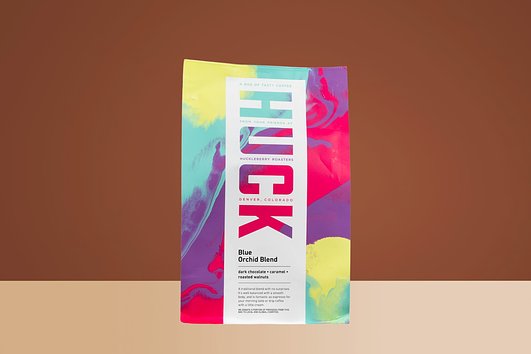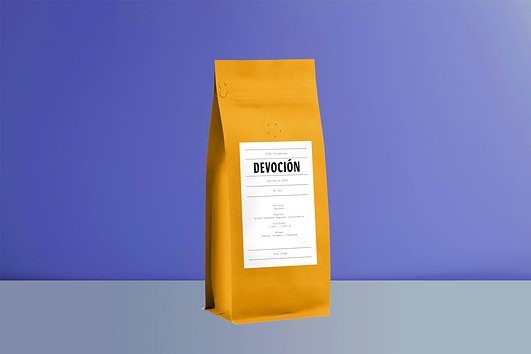Guide to Ethiopian Yirgacheffee Coffee
![]() Maryna Gray
• March 25, 2021
Maryna Gray
• March 25, 2021
There are so many reasons to love African coffee, especially Ethiopian coffee beans. Ethiopia’s coffee industry is steeped in history, tradition, and a rich blend of fact and historical fiction. From tales of Kaldi and his antsy goats to the reverent tone of voice with which coffee lovers say the word “Yirgacheffe" (pronounced yer-guh-cheff), Ethiopian coffee beans conjure up pure coffee romance. Go ahead, say it. It rolls off the tongue.
What Is Ethiopian Yirgacheffe Coffee?
Coffee from Ethiopia runs the gamut from full-bodied, sweet and fruity to lighter-bodied, citrusy and floral, depending on how it's processed. When you hear people rave about coffee from the well-known Yirgacheffe region, they're mainly referring to washed, or wet process, coffee. Ethiopian Yirgacheffe is the coffee that's delicate, floral, and tea-like, with shimmery citrus notes and a clean, light body. (It's worth mentioning that the prized Geisha or Gesha varietal, which carries similar tasting notes to washed Yirgacheffe beans, comes from Ethiopia as well. It was discovered in the 1930s outside of Gesha, Ethiopia, and eventually brought to Panama.) Washed Yirgs have a rather high-class, coffee-snob reputation and—at a lower price point than Geishas—they're a great gateway to appreciating specialty coffee (and impressing your friends).
But what about the other kid sister of Ethiopian coffee beans, the natural processed Ethiopians, with their honey-thick body and bright, decadent berry flavor? Where's their hype? Until recently, natural (or dry process) Yirgs have taken a back seat to their washed colleagues; they're generally seen as comparatively common, and of variable or unpredictable quality. Conventional wisdom holds that they're suitable to brighten up a blend, perhaps, but far less favored as a single origin on the specialty market.
We're glad that's changing! It's time for natural processed Ethiopians to have their time in the sun (which is funny, of course, because natural process beans already spend a lot of time in the sun).
History of Ethiopian Yirgacheffe Coffee
The division between natural and washed processing in Ethiopia has a rich history. Ethiopia, as many people know, is famously the "birthplace of coffee," where coffee plants grow wild throughout the lush, green highlands. Its thousands of indigenous coffee varietals have been cultivated and enjoyed for centuries—long, long before there was such a thing as a wet processing mill. Natural processing, where the freshly-picked beans are spread out to dry in the sun, has always been the traditional means of processing coffee, and by far the most common. Many locals pick their own coffee beans from wild plants and put them out in their backyards to dry.
When done right, naturally processed beans retain a ton of fruit flavor, and often carry a pleasant wine-like acidity. They can be punchy and very sweet, suggesting a variety of fresh fruit-salad flavors. Natural Ethiopian coffee can taste like cantaloupe, cherry, grape, lime, green apple, or even peach. They have heavier bodies with a silky mouthfeel, like velvet, or a syrupy, honey-like texture. They have heft, spiciness, and taste more like they came from the Earth. Natural processing can be tricky, however, and this is where a reputation for variance arises: poorly-dried beans can taste sour or musty, or become brittle and unsuitable for roasting. The drying process is perhaps the most important step to ensure a quality green coffee bean.
Wet processing was introduced into Ethiopia in the 1970s, and Yirgacheffe was the location of the very first wet processing mill. During the washing process, beans are immersed in large vats of water and soaked until the fruit and mucilage comes off, and then the naked beans are dried. This strips the traditional, wine-like fruity, or fermented flavors from the beans and results in that well-known washed Yirgacheffe cup: a lighter body with clean flavors of citrus and florals. Now, a washing mill is an expensive investment on the African content, not just in terms of cost, but for the vast amounts of water required to process the coffee, and the infrastructure needed to handle waste water. And remember, we're talking about Ethiopia, where water isn't known for being abundant. Given this, few growers waste their time wet-processing lower quality beans. By contrast, beans put through a wet processing mill are bolstered by more modern methods, education, and oversight: more standardization and quality control both add up to a more consistent product. These new, washed Yirgacheffe coffees could be "marketed" to the world for the first time as a specialty product, and coffee lovers embraced them. Delicate washed Ethiopian Yirgacheffe coffees soared to prominence while the traditional naturals, still relatively unknown, remained a commodity product.
Ethiopian Yirgacheffe Coffee Today
Within the past decade or so, however, there's been a lot of moving and shaking within the coffee industry. The education and technology previously used in wet processing mills have been extended into natural processing, resulting in a more consistently high-quality product among naturally processed beans. Today, there are more co-operatives and organizations supporting fair trade and direct partnerships than ever before. And, with specialty coffee gaining more and more of a foothold in the U.S. and elsewhere, Ethiopia continues to gain more opportunities to market its beans on the world stage—hence, the "new naturals," a wave of fruit-flavored single-origins from Ethiopia with names like Yirgacheffe, Sidama, Harrar, and Worka.
These new naturals represent Ethiopian coffee beans as they've been enjoyed for centuries, and the terroir-like experience of drinking a natural process coffee from Ethiopia connects us back to the very beginnings of our favorite beverage.
Best Ethiopian Yirgacheffe Coffee
Want to try Ethiopian Yirgacheffe coffee, along with other coffees from around the world? Check out our World Coffee Tour Box. You can also find full-size bags of Ethiopian Yirgacheffe coffee here.
We want to help you make better coffee at home. Our recommendations are our own, and never sponsored. If you see something you love and buy it through our links, we may receive an affiliate commission (thanks for that!).






